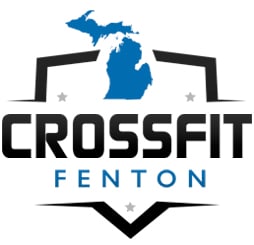CrossFit is defined as “constantly varied, functional movement, performed at high-intensity.” In simpler terms, CrossFit involves pairing together many different types of movements & exercises to encourage a moderate-to-high intensity heart rate. CrossFit incorporates weightlifting, gymnastics (body weight movements), and cardiovascular movements into circuits, while also occasionally just focusing on heavy lifting or long aerobic work. The goal of CrossFit is to help people meet their daily & weekly exercise needs in an efficient, hour-long class led by a CrossFit Coach whose job consists of teaching movements to newer athletes while helping veteran athletes continue to refine movement & improve performance.

CrossFit treats every member as an athlete, capable of learning & performing all of the various movements performed during workouts. The CrossFit “pyramid” defines the focus that athletes should have both inside and outside of the gym.
- Nutrition – No one can out-exercise a suboptimal diet. Taking in enough calories to support exercise but not excess while prioritizing things like protein allow for optimal recovery both from CrossFit but also the daily demands of life.
- Metabolic conditioning – While strength is important, it is the health & function of our cardiorespiratory system that helps us lead not only a long life, but one full of quality. Improving metabolic conditioning ensures that daily tasks no longer challenge & fatigue us while simultaneously improving our aerobic base in the gym, improving our performance in a manner that allows us to continue to improve the function of our heart & lungs.
- Gymnastics – Being aware of our body in space and moving it through its full range of motion is what will lead not only to higher heart rates (therefore improving metabolic conditioning), but stronger muscles, ligaments, tendons, and bones. Individuals who perform full depth squats, for example, have thicker ACLs, PCLs, and meniscus tissue in their knees than individuals who squat above parallel or do not squat (Hartmann et al. 2013)
- Weightlifting – Strength is an important physical quality. Stronger people experience less injuries, and on a whole, live longer than weaker people. Focused strength training during CrossFit allows for progression of maximal tissue capacity, ensuring daily tasks like picking up kids, gardening, or getting up from a low chair are beneath our ability threshold. In CrossFit, we take time to lift heavy in isolation, such as with squats, deadlifts, pressing, or Olympic weightlifting. We also become stronger by lifting lighter weights under cardiovascular fatigue during metabolic conditioning.
- Sport – For almost every person, sport & competition is at the top of the pyramid because most human beings are not competitive athletes. As a general physical preparedness (GPP) program, CrossFit can & does prepare amateur and professional athletes for their sport when it comes time to compete.
All of the physical therapists here at HealthHQ consider themselves CrossFitters/CrossFit athletes. We incorporate the principles of CrossFit into our physical therapy sessions, ensuring that not only do we help you meet your physical therapy goals, but you increase your strength & fitness during your time with us. If you’re currently a CrossFit athlete and you’d like help staying in the gym, get started by booking your first appointment with us. If you’re looking for physical therapy near Fenton, MI learn more about us and if you think you’d like to try a CrossFit class, ask your physical therapist about trying a class next door at CrossFit Fenton. They may even be able to take class with you 🙂



